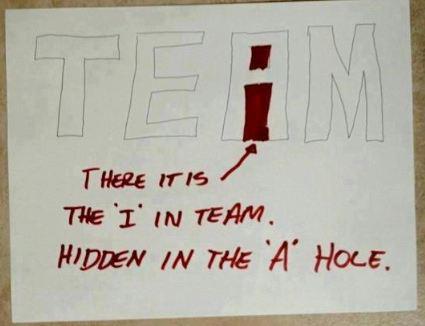
I wrote about the fact that there isnt an “I” in team, but there is an “M” and an “E” here. While that notion still stands true, I like the illustration shown above much more. Team and the entire notion of individual versus the group is integral to understand how we belong and how we fit into a bigger picture.
Introduction
Team building is the process of creating a group of people who work together to achieve a common goal. It involves understanding each other’s strengths and weaknesses, building trust, and developing effective communication skills. Common goals are not just about completing tasks. It is also about creating a positive work environment where members feel valued and supported. When done properly, team building can lead to increased productivity, improved job satisfaction, and a stronger sense of community within the workplace.
Importance of Individual Value in Team Building
While the focus is often on group dynamics, it’s important not to overlook the value of each individual member. Every person brings their own unique skills, experiences, and perspectives to the table. Recognizing and utilizing these individual strengths is essential for overall success. When members of the group feel like their contributions are valued and appreciated, they are more likely to be invested in the overall success and work harder to achieve the organization’s goals.
Understanding the Self
Before individuals can contribute to a team, they must first understand themselves. This self-awareness can help members identify their strengths and weaknesses, as well as their communication and work styles. By understanding themselves, they can better understand how they fit into the team. With this knowledge comes the realization of how they can contribute to the overall success. This understanding can also help to communicate more effectively with each other, as they are aware of their own communication style and how it may be perceived by others.
Identifying Individual Strengths and Weaknesses
To truly unlock individual value in team building, members must identify their strengths and weaknesses. This can be done through self-reflection, feedback from others, or through personality and skills assessments. Once identified, members can work to leverage their strengths and improve upon their weaknesses. By doing so, they can better contribute to the overall success and help fill any skill gaps.
Incorporating Individual Strengths into Team Dynamics
Once individual strengths are identified, members must work to incorporate them into the larger group dynamic. This can involve assigning tasks that align with each person’s strengths. Or one can create a structure that utilizes each individual’s unique skills. Then people feel like their contributions are valued and appreciated, which can lead to increased motivation and productivity.
Encouraging Individual Growth
In addition to incorporating individual strengths into group dynamics, it’s important to encourage individual growth within the team. This can involve providing opportunities for professional development, mentoring, or promoting a culture of learning and growth. When participants feel like they are growing and developing within their roles, they are more likely to be invested in the overall success and continue to contribute to the larger goals.
Balancing Individual Needs with Over-Arching Goals
While it’s important to recognize and utilize individual strengths, it’s also important to balance individual needs with the over-arching organizational goals. This involves finding a balance between allowing members to work in a way that is comfortable for them. It also ensures that the group is working towards a common goal. By finding this balance, people can work more effectively together and achieve their goals in a timely and efficient manner.
The Role of Leadership in Fostering Individual Growth
Leadership plays a crucial role in fostering individual growth. Leaders must create a culture that values and encourages individual growth, while also ensuring that team goals are being met. This involves providing opportunities for professional development, mentoring, and creating a positive work environment where members feel valued and supported. When leaders foster individual growth within the group, they create a more engaged and motivated unit that is better equipped to achieve its goals.
Conclusion: Embracing the ‘I’ in Team Building for Overall Success
In conclusion, unlocking individual value in team building is essential for overall team success. By understanding themselves, identifying their strengths and weaknesses, and incorporating these strengths into group dynamics, members can contribute more effectively to the over-arching goals. Encouraging individual growth, promoting self-discovery, and balancing individual needs with group’s goals are also key components of successful team building. By embracing the ‘I’ in team building, team members and leaders can create a more engaged and motivated team. And that team is better equipped to achieve its goals.
Until next week.
L’chaim,
jack




